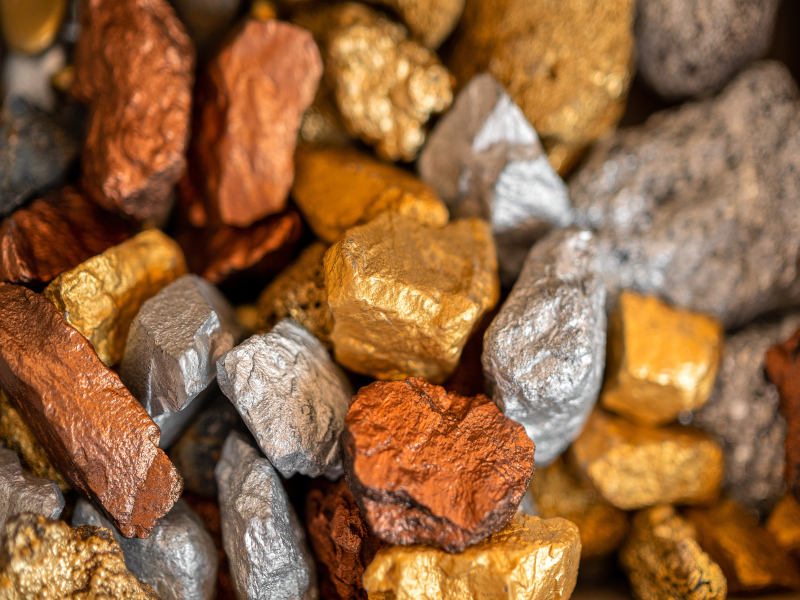The Pumpkin Hollow project is a high-grade iron-oxide copper-gold deposit located south-east of Yerington, Nevada, US.
The mine is developed as both an open pit and an underground mine. It was discovered by US Steel in 1960 and acquired by Nevada Copper in 2015.
Exploration has outlined five separate deposits so far. Two high-grade deposits, designated East and E-2, are underground, while the remaining three, North; South; and South-East are open-pit deposits.
All state and country-level permits to begin the development of underground access were granted in April 2011. The mine started underground production in December 2019 and has a projected mine life of 13.5 years.
Nevada Copper announced the filing of a voluntary petition for relief under Chapter 11 of the United States Bankruptcy Code in June 2024.
Pumpkin Hollow mine location
The Pumpkin Hollow property is situated roughly seven miles (11.26km) south-east of Yerington, Nevada, within Lyon County. The project is located in the Mason Valley, which runs north-south and lies between the Singatse and Wassuk mountain ranges.
Geology and mineralisation of Pumpkin Hollow
The property is situated on the eastern fringe of the Quaternary gravel-covered Mason Valley, and it comprises a tertiary (Oligocene) tuffaceous volcanic assembly. This volcanic sequence includes quartz-latite ash flows and crystal tuffs, which are surmounted by the Singatse Tuff Formation, characterised by lithic-rich tuffs.
The southwestern segment of the Pumpkin Hollow property is primarily characterised by Mesozoic strata from the early Jurassic, consisting of fine-grained felsitic siltstones and tuffs, which are in turn overlaid by thinly bedded carbonaceous, calcareous argillites, tuffs, and limestones.
The Jurassic Yerington Batholith intrusion has resulted in extensive IOCG (iron oxide copper gold) mineralisation, mainly skarn, which contains copper, magnetite, and varying amounts of gold and silver. This skarn mineralisation is primarily located in the middle to lower sections of the Gardnerville Formation, the upper part of the Mason Valley Formation, and within the intrusive granitoid.
Reserves at Pumpkin Hollow mine
The proven and probable reserves at Pumpkin Hollow open-pit mine are estimated to be 385.7 million tonnes (mt) grading 0.47% of copper (Cu), as of January 2019. The total contained copper is estimated at 3,590 million pounds (mlb).
The proven and probable reserves at Pumpkin Hollow underground mine are estimated to be 23.9 mt (net) grading 1.59% Cu.
Mining method at Pumpkin Hollow
The Pumpkin Hollow property is developed using both open pit and underground mining methods.
The transverse long-hole stoping method was chosen as the optimal mining technique for all three zones – EN, ES, and E2 – of the underground project due to safety, mining recovery, dilution control, and productivity considerations.
The stopes are 100ft high × 50ft wide for the ES and E2 zones, and 75ft high × 50ft wide for the EN zone.
Stopes are mined bottom-up to minimise lead time and upfront development. In narrower sections of the E2 zone, longitudinal long-hole stoping is used for greater efficiency in lateral development.
The open-pit development includes two mining areas: the North Pit and the South Pit. Mining began in the higher-grade North Pit, followed by the lower-grade South Pit. The North Pit is designed in four phases while the South Pit is designed in two phases.
Underground ore processing at Pumpkin Hollow
The Pumpkin Hollow copper underground ore concentrator is designed to process 5,000 short tons per day (stpd) of copper ore sourced from the East and E2 deposits.
The run-of-mine (ROM) ore undergoes crushing in a primary jaw crusher before being transferred to the grinding circuit. This circuit comprises a semi-autogenous grinding (SAG) mill and a ball mill, which together facilitate a two-stage grinding process within a closed circuit that includes a pebble crusher and classifying cyclones. The grinding occurs as a wet process.
The discharges from both the ball mill and the SAG mill converge into a common cyclone feed hopper. From here, the slurry is propelled to a cluster of cyclones. The overflow from these cyclones is directed into the rougher flotation conditioning tank, marking the commencement of the flotation process. The pulp density of the slurry feeding the rougher flotation is consistently maintained at approximately 35%w/w solids.
In the rougher flotation circuit, the milled pulp is treated to recover the desired minerals. The resulting rougher concentrate is ground further and then passed through cleaner flotation to enhance the concentrate to a marketable quality. Subsequently, the flotation concentrate undergoes thickening, filtration, and storage in preparation for shipment.
Open-pit ore processing details
The Phase I processing facility is designed to handle 13.5mtpa and Phase II adds capacity for another 12mtpa.
In Phases I and II, ore from the North and South Pits is crushed at the pit crest by a single crusher. The crushed ore is transported via an overland conveyor to coarse ore stockpiles for each phase, providing surge capacity for feeding into the grinding circuits.
Ore is reclaimed from the stockpiles using apron feeders and is discharged onto conveyor belts that feed the SAG mills. Both phases utilise a two-stage grinding circuit, with SAG mills in a closed circuit with pebble crushers and ball mills also in a closed circuit with hydrocyclones.
The ball mill and SAG mill both discharge into the common cyclone feed hopper, from which slurry is pumped to a cyclone cluster.
The milled pulp undergoes rougher flotation to recover target minerals. The rougher concentrate is ground and processed through cleaner flotation to produce a high-grade copper concentrate. The final concentrate is thickened, filtered, and stored before shipment.
Site infrastructure at Pumpkin Hollow
The property is accessed via a sealed public road network to E Pursel Lane to within 3.5 miles (5.6km) of the property.
A new 120kV transmission line is built from a service point on the existing NV Energy System to the mine site.
Fresh water is sourced from dewatering well WW-01.






